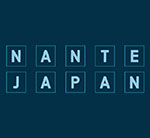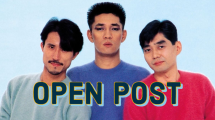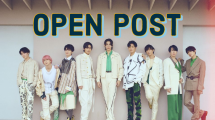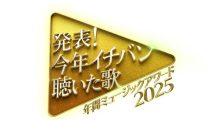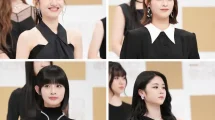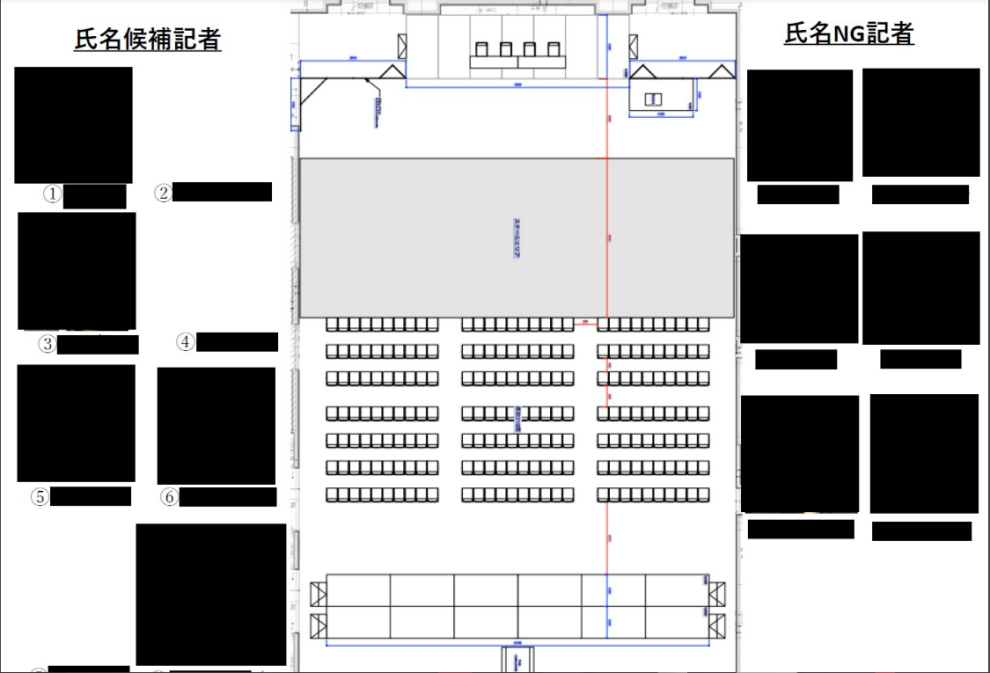On the 2nd, various journalists increasingly became aware of a “NG List” that was being used by Johnny’s & Associates.
The use of a list to bar the speech of particular members of the press is not unique to Johnny’s, nor is it particular to Japan. However, it is a significant curtail to press freedom, and has been one of many tactics used to curtail actual free speech in a number of countries, including Japan. An example is the headline for Nikkan Gendai below, which revealed the existence of the NG list for none other than the Liberal Democratic Party of Japan. Such tactics in conjunction with the routinely criticized press clubs is the primary reason why Japan ranks the lowest out of the G7 members on press freedom.
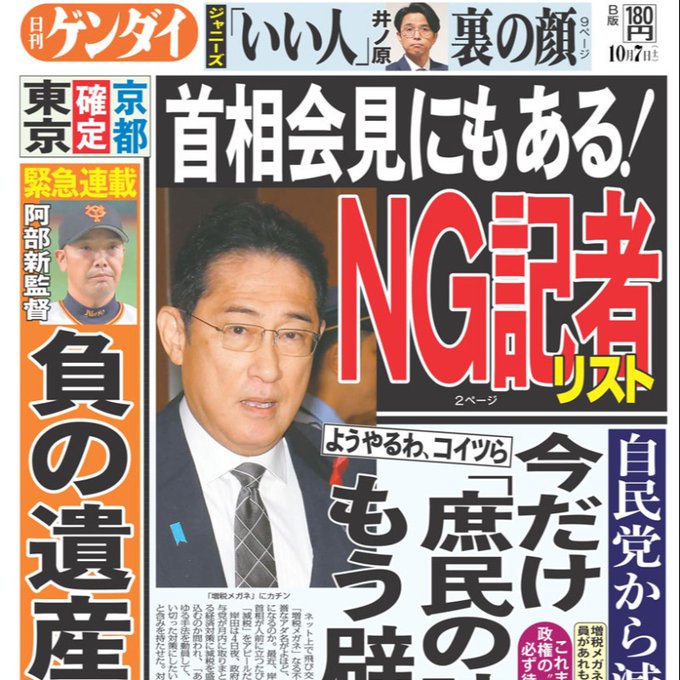
The Johnny’s Sexual Abuse Survivor Group rightly criticized the use of this tactic, stating that they believed Johnny’s should redo the press conference from the 2nd without such an NG list, and pointed out that it could not just have been Johnny’s that chose to take this action, emphasizing that the consulting agency the agency had retained must also take an equal portion of the blame.
Johnny’s had earlier clarified that they were not involved in the creation of the list, and that the consulting agency FTI Consulting, which was running the conference on the second, had chosen to take this action. While the main moderator had tried to say that he took no preference to whether or not a journalist was on the said list, it cannot be denied that many of those on the blacklist were never chosen to speak.
Given the attention of the public, a fact finding investigation was done of how the conference was organized, and on the 10th, a report was published to the public.
Please find below a translation of the report.
- Investigatory report on the leak of the NG List to the public
- The following is a compilation of the investigations held by Chief Compliance Officer Yamada Masayuki (simply Yamada from this point forward) in order to understand and investigate the circumstances surrounding the leak of the NG list to the public.
- List of the facts
- Purpose of the press conference on the 2nd
- The initial press conference held on the 7th of September was one where the company stepped forward to offer their apologies to the public as well as handle questions from members of society, various business partners, and other stakeholders. After the conference, questions were strongly raised by the public, including those that regarded the measures on the specifics of compensation towards the victims, future responses and measures to prevent reoccurrence of the abuse, changing the name of the company, and the financial ownership of the company. In order to more properly address those concerns, the company organized a second press conference to be held on October 2nd.
- A portion of the work is outsourced to FTI Consulting
- Johnny’s recognized that it had no such experience in holding these sorts of press conferences, so the agency had asked for recommendations on who they could consult to handle such proceedings. Legal firm Nishimura & Asahi attorney Kimeda Hiroshi recommended FTI Consulting, and a decision was made to contract said consulting agency to handle these procedures. This contract was written up September 1st.
- FTI was also asked to handle the press conference on October 2nd, and meetings were held starting September 22nd onwards to discuss how to proceed with the October 2nd conference. In these, Yamada participated in one said conference. Nishimura & Asahi had participated in some of these meetings, as they continued to work with the company on legal matters.
- FTI Consulting asks for feedback from media partners regarding the September 7th press conference
- To prepare for the next session, FTI asked various members of the press including television studios and newspapers their thoughts on the September 7th conference. Frequently, many would respond that while many members of the press had wanted to ask questions, several would constantly hog the microphone, thereby prohibiting the others from asking as many questions as they would have liked. Another criticism was that the question and answer session was not well organized, and that some of the comments and questions were disorderly and not conducive to the purposes of the conference.
- As can be seen in the recordings of the 4 hour long press conference, there were some members of the press who frequently ignored the moderator, would repeatedly ask off-topic questions, shout over other members of the press, and disrupt the proceedings of the press conference.
- The primary intention of Johnny’s was to ensure that the next press conference would proceed in an orderly fashion, and that there would be sufficient time to explain the responses to the most important questions as raised by the various stakeholders in depth.
- Given the constraints of the situation as well as the difficulty in finding a venue for the October 2nd conference, FTI deemed it necessary to more strictly conduct the October 2nd conference, particularly given the extreme time constraints the organization was under (there was an exact 2 hour time limit on the venue). Priority was given to allowing as many press members as possible to ask their questions without unnecessary interruption as well as giving the agency time to explain the measures in-depth.
- September 30th
- Several members of the senior team, including President Higashiyama, Director Fujishima, President Inohara, CCO Yamada as well as crisis management team members, public relations staff, attorneys including Kimeda and legal staff from Nishimura & Asahi joined together to discuss the run down for the upcoming press conference. FTI also joined for 30 minutes at the beginning of the meeting to discuss exactly how the press conference would be run and the agenda for the meeting with a supporting document.
- A list of reporters and press members was passed around for who would be participating at the October 2nd conference. A question was raised by the member participants about how to better control the behavior of the reporters who regularly ignored the moderator or made remarks that were not on topic. As there were not enough copies of this list, neither CCO Yamada nor the attorneys were able to see the list.
- The document contained a list of press reporters who should be called upon during the conference, and a list of “nomination NG” reporters. When looking at the two columns, President Inohara asked exactly what “nomination NG” meant, and that not calling upon everyone would be counterproductive to the entire point of the press conference.
- At Inohara‘s point, the main point person for FTI, Nojiri, said that NG was not meant to mean “do not call upon”, but rather that they required special attention and consideration, and that such reporters needed more handling than the others. Attorney Kimeda and the other participants agreed with Inohara, saying that these reporters should also be allowed to speak.
- So long as time permitted, FTI was explicitly allowed to separate out this list of “NG Reporters”, and that they were explicitly allowed to ask their questions.
- Reporters who were regularly tasked to cover business were also specifically picked to go first, as many of the objections and questions raised by the public were related to matters of corporate governance. The order of who was picked to speak was balanced more on the basis of the kinds of questions to be asked and the topics to be discussed as opposed to whether or not the journalist was on the NG list or the appointed list.
- Distribution and creation of the list with photos
- All the lists as mentioned previously were those created without any photos.
- On the morning of the day of the press conference, FTI staff members created a list as well as a chart of all the press conference attendees and the specific organization of the press room.
- The list was created and distributed in the following manner.
- FTI staff members created a list of reporters with photographs at 10:40AM on the day of the conference.
- The list is printed and copied at a convenience store in the building at the press conference location.
- Printed copies were distributed to the moderator and FTI staff.
- A digital version of the list and organizational document is shared to the LINE group that contained FTI staff and project personnel including an event management company.
- Another digital version is shared to another LINE group of event management company personnel.
- Because of the misleading nature of the column headers, the event staff and personnel were unaware that the choice to not select “NG participants” was against Johnny’s explicitly stated instructions (to also allow the “NG personnel” to speak). Due to the short nature of the time between when the list with photographs was created and the opening of the press conference, neither Johnny’s nor Nishimura & Asahi attorneys were given the chance to approve either the wording or the organization of the document.
- As the FTI member Nojiri was also not involved in the creation, FTI US headquarters will also separately investigate the leak of the materials.
- Reporter questions at the October 2nd press conference
- An analysis was done of how many questions were answered to which type of reporter during the press conference.
- The analysis showed that the amount of time spent on the reporters that should have been called and the reporters on the NG list were roughly the same. The names on the “to be called candidates” list were allowed to ask 8 questions in total for a combined 14.5 minutes, whereas names on the “NG list” were allowed to ask 5 questions in total for a combined 11.5 minutes. Even those questions asked out of bounds (that is, remarks that were made off topic or in violation of moderator rules) were responded to by the company.
- Purpose of the press conference on the 2nd
The full company statement can be read in Japanese here.

